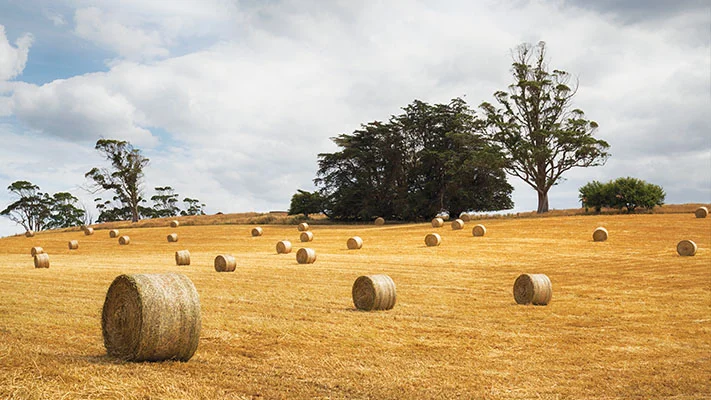
China is in the midst of a livestock boom, fuelled by Australian oaten hay.
A growing Chinese middle class, that no longer considers meat, milk and egg consumption a luxury, has triggered a growth in domestic dairy production that has more than tripled since 2000.
The development of large-scale, modern dairy farms in China that focus on production and efficiency of scale have recently become key importers of Australian fodder.
Hay Australia Managing Director, Andrew Bolt, a leading hay processing and exporting company, has seen exports of oaten hay to China increase from around 32,000 metric tonnes (mt) in 2013, to close to 300,000mt in 2018.
“The Chinese view their dairy industry as a core part of their agricultural development,” Andrew said.
“Around the early 2000s, they started developing their dairy industry and the first step was buying some of the best genetics they could access around the world, including from Australia.
“They’ve also looked at increasing productivity through other means, and one of the most important things after genetics, is the fodder they provide their cows.
“Australian fodder has found a really good position as an accessible, competitive and quality product that has really helped their productivity and animal health,” he said
Australian hay: pick of the crop
Since 1998, Western Australia (WA) has produced over 40 per cent of Australia’s export hay, followed by South Australia (SA) and Victoria (VIC).
Andrew attributes the record levels of Chinese demand for Australia’s oaten hay to its consistently high quality.
“The Chinese dairy diet is based on a lot of concentrated feeds. To ensure those concentrates are effective, and to maintain animal health, it’s important to have a really good quality fibre.
“Australian oaten hay is really palatable, and it makes the rumen work more efficiently and effectively. That’s why Australian oaten hay is a really good fit for the Chinese market.”
The Grains Research and Development Corporation (GRDC) believes WA’s export hay success is largely due to its climate, with its mild spring weather providing a good window for curing hay.
The limited secondary markets for hay (i.e. domestic dairy and beef producers) have also meant WA growers and contractors have had to develop skills and experience in producing high quality export products.
WA now has the largest number of export accredited processing facilities – the majority within a two-hour drive of Perth. This not only gives efficient transport access to port, but keeps costs down.
A balancing act
In 2018, WA’s position as a key exporter of hay was criticised by east coast feedlotters and dairy farmers, who were struggling to feed their livestock.
“In reality, only 10 to 15 per cent of all hay grown in Australia is exported,” Andrew said.
“But the eastern state’s drought will certainly have an impact on the amount of hay Australia will have to export in 2019.
“The volume exported to China will certainly be less, due to the drought conditions making oaten hay a scarce resource and highly demanded by the domestic market.”
A growing relationship
Given its potential for growth, Australia’s export relationship with China is of significant importance to Australia’s agricultural industry.
“As a large-scale importer of livestock feed, China’s demand for our hay adds a lot of resilience and robustness to Australia’s overall fodder market,” he said.
“There are other parts of the Chinese market that are not currently buying oaten hay, but potentially could be, like their beef market, which they are starting to develop. There’s also potential demand from an equine market.”
The current trade standoff between China and the US may also result in opportunities for Australian hay producers and exporters.
Andrew says the US dominates the protein fodder sector with its alfalfa hay but demand could emerge for lucerne, wheaten and barley hay as an alternative if tariffs are imposed on US fodder.
“Currently US alfalfa hay is subject to a 25 per cent penalty tariff and that’s on top of an existing seven per cent tariff, so buyers currently pay a penalty of more than a third on the price in tariffs.
“These tariffs have certainly increased the demand for Australian oaten hay, but with prices reflecting Australia’s seasonal conditions, short term demand from China has cooled.
“But I’m pretty confident they recognise the long-term value of Australia’s contribution to the livestock fodder industry.”